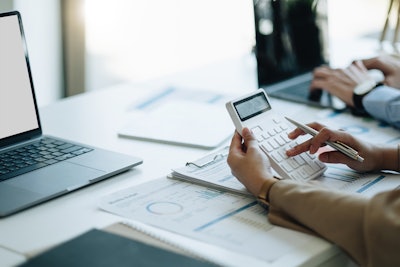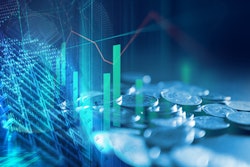
It has been two years since the onset of the COVID-19 pandemic, which in many ways signaled the beginning of the business world’s race to embrace digitization. In the B2B space, the need to adapt to remote work and other external challenges like the mail delays and an uncertain economy required suppliers and buyers to accelerate the digital transformation of their payments processes. This was a considerable task, given some 40% of B2B payments were still made by paper check at the time, but it was also a move that most businesses knew was non-negotiable as late payments, worsening DSO and the slow movement of cash threatened their overall health like never before.
Further, the consumerization of B2B payments was reaching a fever pitch, due in part to the emergence of the next generation of B2B buyers (millennials) accustomed to instant and effortless payment processes. Indeed, as organizations navigated what for many was the greatest challenge they’ve ever faced, they also found themselves operating against a backdrop where their pivot to digital payments was an immediate priority.
Now, as we come to grips with how much the world has changed these past two years, it’s a good time to also analyze how successful B2B payments’ digitization has been, how plans have shaped out, and how much room there still is to grow?
Organizations are turning away from the paper check
Before the onset of Covid-19, there was a lot of discussion about the future of the paper check in B2B. Although companies have been digitizing their payments processes for decades, the check has traditionally been the most trusted model for businesses, so even as digital payments increased over the years, they’ve largely taken a back seat to check-based options. It is only in the last few years that the check’s market share fell below 50%.
Its dominance continues to dwindle, with new research from the Association for Financial Professionals (AFP) finding that the median volume of checks currently processed is 500-999 per month compared to the 1,000 to 1,999 reported in 2015, but it’s perhaps in these last two years where we’ve seen the greatest strides made in terms of organizations loosening their grip on the paper check.
In fact, AFP’s study also found that 73% of organizations are in the middle of transitioning their B2B payments from checks to digital payments. This is significant considering just $4.1 trillion in global digital transactions were made in 2019 – the year prior to the pandemic – according to Statista. Today, however, the opportunity stands at $120 trillion.
This growth certainly suggests the industry’s digitization plans are shaping up well, but what other steps have been taken to move the needle?
Adoption of automated payments networks is speeding up
We have also seen a notable increase in the number of B2B organizations buying into a payments network strategy that automates transactions between buyers and suppliers. This is a complete reimagination of how they have been doing business for decades. It is also yet another example of how both the pandemic and the consumerization of B2B payments have dramatically altered AR teams’ priorities as they abandon their trusted check models for digital ease, convenience and speed.
As with ATM networks, B2B payments networks automatically connect suppliers to many of the AP portals buyers are using to pay invoices, as well as to third-party banks and ERPs. They work like a digital lockbox, capturing the payment instruction when an invoice is approved to pay and moves the money to the supplier based on its payment preferences. It obtains the remittance, posts it and presents it in a format compatible with the company’s AR process. A payments network also allows suppliers to broadcast their payment preferences to AP portals, which more and more companies are using.
What B2B payments networks’ growth perhaps showcases is how the challenges of the past two years have inspired AR teams to finally take control and end the inefficiencies that have frustrated them for decades. A 2021 Billtrust survey of over 350 accounting/finance senior leaders found that their most persistent concern is the increasing number of customer portals they have to deal with, with the vast majority saying they interact with an average of 11-20 AP portals. This is of course somewhat of a positive sign as it means they’re experiencing a rise in buyer demand and thus the need to deliver more invoices, but it is dramatically increasing the manual work they need to do which is why more are turning to these networks to level the playing field.
With that said, more integration is needed for these networks to continue to grow. There is an emerging need to bring suppliers and buyers together by connecting the financial-services ecosystem across AP providers, payment card issuers, ERPs and banks. Still, the acceleration of these networks could be a landmark moment for B2B organizations and the payments industry in general.
But AR’s modernization journey still sees gaps
Despite B2B payments making significant strides since the onset of the pandemic, questions remain about how modern their processes actually are. This is not to take away from what they have achieved these past two years. Their actions to reduce the paper check’s stubborn hold continues to leave a long-term stamp on the industry, and the fact that there is still room to improve suggests a bright future for B2B payments.
For this future to be realized, organizations need to reexamine what the term ‘modernization’ means to them. This is because there are several contrary indicators suggesting they are not as modernized as they perceive. For example, 2021 research found that 86% of AR practitioners rate their department as very or somewhat modernized. Yet, over 50% admit they don’t have real-time integrations with their ERP systems, nor do they have automated integration with their customers’ accounts payable (AP) procure-to-pay platforms. Furthermore, more than 60% say the majority of their payments or invoices are not yet digital.
The good news is that there’s still a significant opportunity for B2B organizations to enhance the digitization plans that they’ve already advanced during this pandemic. As the next generation of B2B buyers and payments professionals take the reins, there is no doubt that in the near future, B2B payments experiences will be more connected across the ecosystem via networks and new technology. For now though, businesses can be proud of their progress.













![Pros To Know 2026 [color]](https://img.sdcexec.com/mindful/acbm/workspaces/default/uploads/2025/08/prostoknow-2026-color.mduFvhpgMk.png?ar=16%3A9&auto=format%2Ccompress&bg=fff&fill-color=fff&fit=fill&h=135&q=70&w=240)


